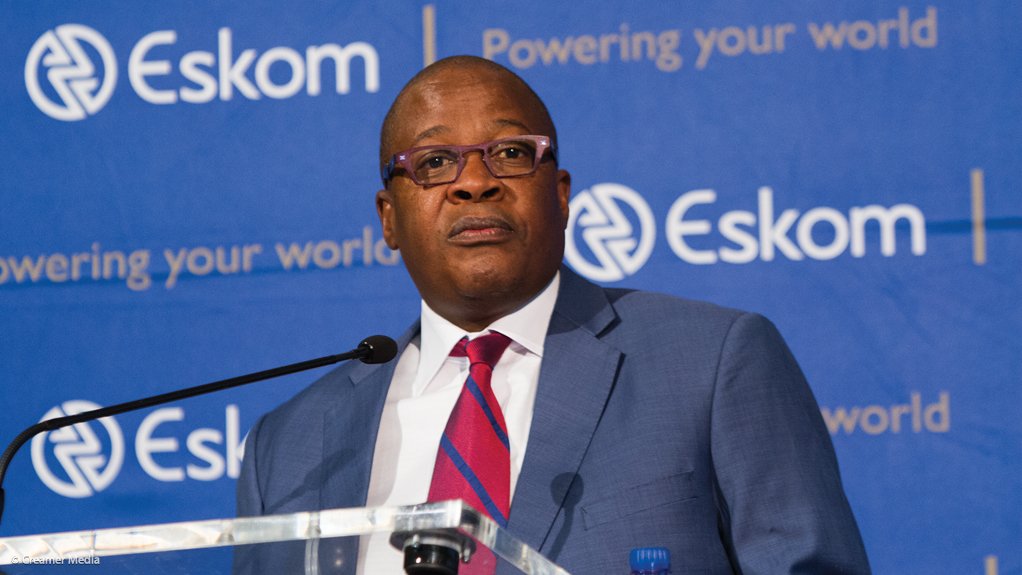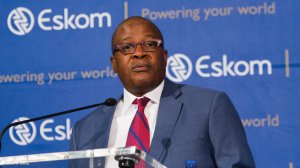Despite reporting a 1.7% period-on-period decline in electricity sales for the six months to the end of September, Eskom’s primary energy costs still rose 8% to R40.9-billion, with diesel accounting for 16%, or over R6.5-billion, of that bill.
Sales slumped to 107 307 GWh from 109 168 GWh in the comparable period of 2014, while the energy availability factor (EAF) of the State-owned utility’s coal-dominant fleet fell materially to 70.39% from 76.77%.
The EAF had since recovered marginally, with Eskom reporting that it had reached 74.4% on November 16, which remained well below the 80% target set by the Electricity War Room.
Production from the diesel-fuelled open cycle gas turbines (OCGTs), in the Western Cape, rose sharply to 2 961 GWh during the six months, from 1 164 GWh during the same period in 2014.
The plants, nevertheless, produced less than 3% of Eskom’s output during the period, despite their 16% contribution to overall primary energy costs. But their cost of production fell to R2 273/MWh from R3 112/MWh, owing to the decline in diesel prices.
During the period – which was associated with bouts of load-shedding and a significant winter maintenance programme – the OCGT plants had been operated at load factors of as high as 40 – load factors had since fallen to between 5% and 14%.
Coal costs, meanwhile, rose to an average of R345/t from R305/t and Eskom burnt 57.27-million tons during the period. The rise in coal costs came amid falling international prices and was attributed to the displacement of lower-cost coal operations as a result of maintenance and the signing of new long-term, but higher-priced, contracts.
USING MEDUPI COAL ELSEWHERE?
Meanwhile, CEO Brian Molefe confirmed that Eskom was preparing to receive take-or-pay coal from Exxaro’s Grootegeluk mine that could not yet be burnt as a result of delays to the Medupi project, in Limpopo. The decision would require an investment into new stockpiling facilities; a course favoured over paying penalties.
Studies were also under way to assess the prospect of using some of the Medupi coal in power stations that might face supply constraints, including Hendrina, Kendal and even the Kusile project, where supply negotiations were still under way with Anglo American Inyosi Coal.
Group executive for generation Matshela Koko said talks with Anglo American Inyosi Coal could be concluded within three months and that the negotiations were accommodative of Anglo’s recent ring-fencing of assets that supplied Eskom , such as New Vaal, Kriel and New Largo.
Molefe said negotiations were also under way with the distressed Optimum colliery, which was supplying the Hendrina power station under a R150/t supply agreement that would expire at the end of November. He insisted that Eskom was entitled, until 2018, to receive coal at that price, which Glencore had argued was below Optimum’s cost of production.
However, Eskom was assessing the prospect of using coal initially destined for Medupi should it fail to reach an agreement with Optimum, which was currently in business rescue. The coal would have to be transported, washed and blended to make it suitable for use by Hendrina.
Medupi coal could, however, be used in Kendal and Kusile without further beneficiation.
“We are still working on the numbers for the transport of the coal,” Koko said.
He also dismissed arguments that Eskom faced a “coal cliff”, saying it had secured 80% of its coal requirement for the coming five years and was confident of closing any future supply gaps.
Edited by: Creamer Media Reporter
EMAIL THIS ARTICLE SAVE THIS ARTICLE
To subscribe email subscriptions@creamermedia.co.za or click here
To advertise email advertising@creamermedia.co.za or click here














